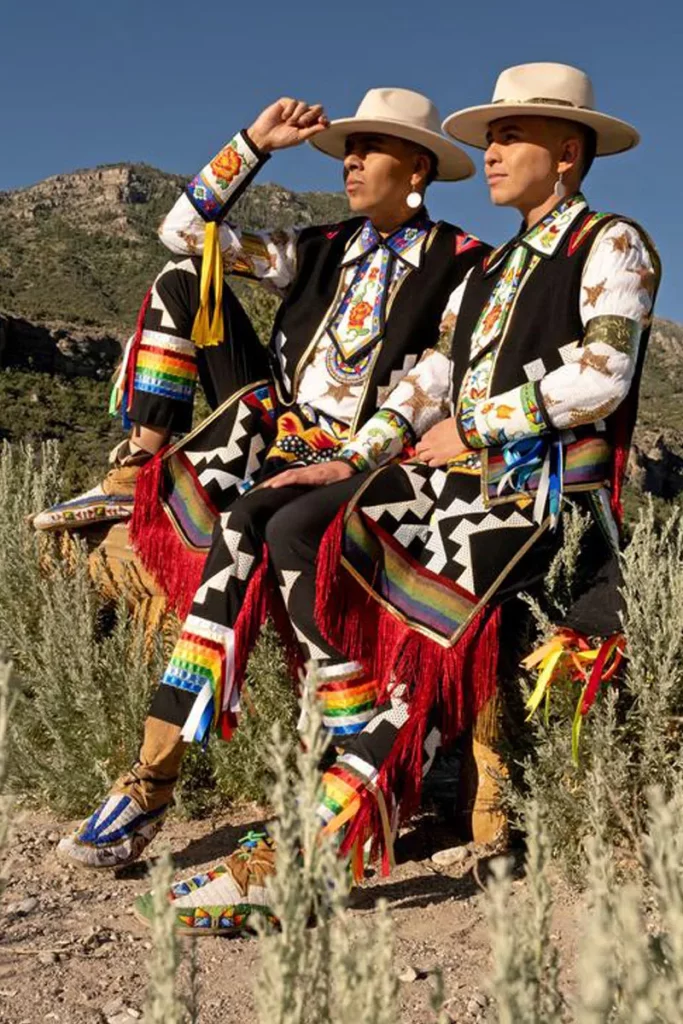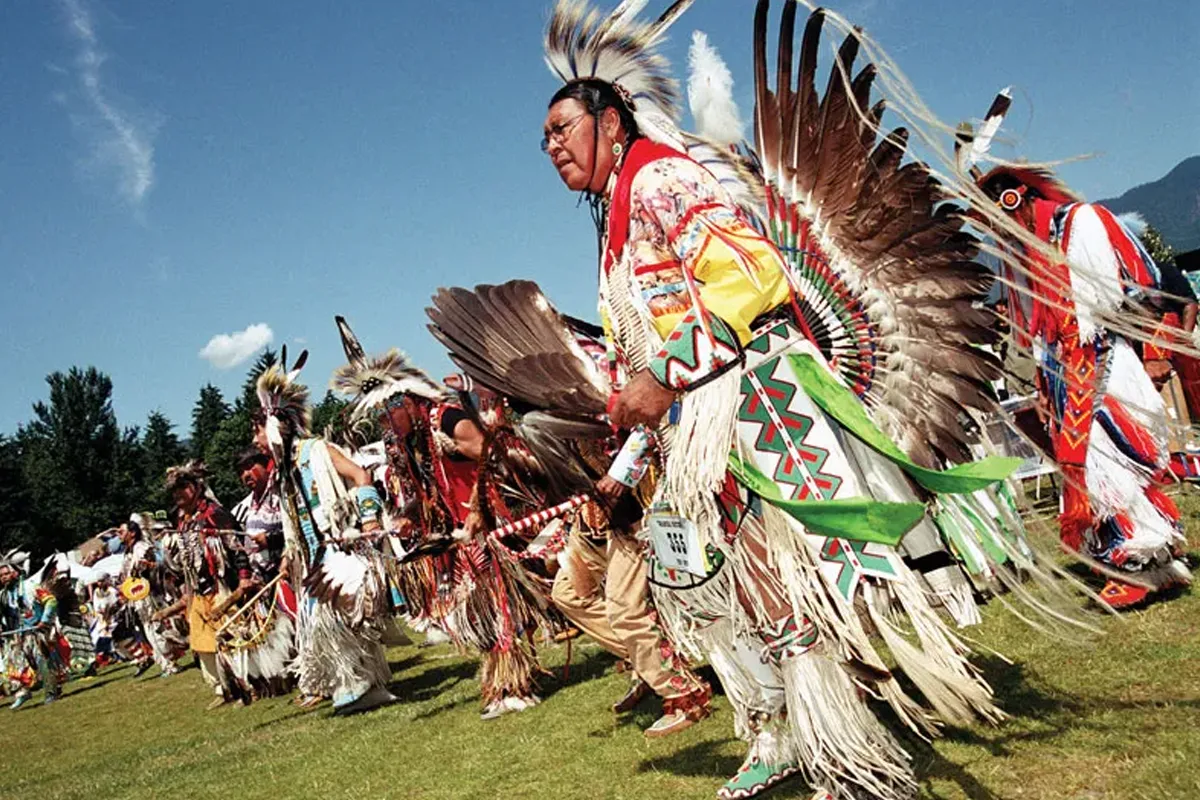Uniting masculine and feminine energies, Two Spirit identities offer a holistic perspective on gender and spirituality. Challenging Western norms Lampoon explores the definition and the meaning of the term
Two spirit: definition, meaning and origin
The term “Two Spirit” originates from Indigenous cultures of North America and encompasses a complex understanding of gender and sexuality. It describes individuals who embody both masculine and feminine qualities, or who may transcend traditional notions of gender altogether.
The concept of Two Spirit predates European colonization and has deep roots in Indigenous traditions. While the specific terminology and cultural practices associated with Two Spirit vary among different Indigenous tribes and nations, the overarching idea reflects a recognition of gender diversity and fluidity.
Fluid Vocabulary: Who Are the Two Spirit? About human respect
In the exploration of LGBTQ+ identities, the term “Two Spirit” stands as an expression of gender and sexual diversity within Indigenous cultures of North America. Rooted in Indigenous traditions, Two Spirit encompasses a complex understanding of gender that goes beyond the binary constructs of male and female. The history, cultural meaning, and contemporary meaning of the Two Spirit identity, Lampoon sheds light on both Indigenous and LGBTQ+ communities.
Origins and historical context of the term Two Spirit – about human respect
The term Two Spirit originates from Indigenous languages and cultures across North America, where it has been used for centuries to describe individuals who embody both masculine and feminine qualities. While the specific terminology varies among different Indigenous tribes and nations, the concept of Two Spirit reflects a profound understanding of gender fluidity and non-conformity.
Historically, Two Spirit people held revered roles within their communities, often serving as mediators, healers, or spiritual leaders. They were recognized for their unique abilities to bridge the masculine and feminine realms, bringing balance and harmony to their communities. However, with the arrival of European colonizers and the imposition of colonial ideologies, the acceptance and celebration of Two Spirit identities were suppressed and stigmatized.
Human respect: cultural meaning and ceremony in Two Spirit
In many Indigenous cultures, Two Spirit individuals are seen as possessing a sacred gift – a connection to both the physical and spiritual worlds. They are often regarded as keepers of traditional knowledge and guardians of cultural practices. In ceremonies and rituals, Two Spirit people may play roles, serving as conduits between the human and spiritual realms.
The acceptance of Two Spirit identities varies among different Indigenous communities, with some tribes embracing and celebrating these individuals, while others may struggle with the legacy of colonization and homophobia. Nevertheless, the resurgence of Indigenous cultural pride and activism has led to a renewed appreciation for Two Spirit identities and the reclaiming of traditional roles and ceremonies.

Challenges and intersectionality – Two Spirit: a gender mix
Despite the cultural meaning of Two Spirit identities, many individuals face challenges and discrimination within both Indigenous and mainstream society. Homophobia, transphobia, and colonial legacies of oppression continue to impact the lives of Two Spirit people, contributing to higher rates of homelessness, unemployment, and violence within these communities.
Moreover, the intersectionality of Two Spirit identities intersects with other marginalized identities, such as race, class, and disability. Indigenous LGBTQ+ individuals often face compounded forms of discrimination and marginalization, highlighting the addressing systemic inequalities and advocating for social justice and inclusion.
Contemporary activism of Two Spirit and the human respect
In recent years, there has been a growing recognition of Two Spirit identities within LGBTQ+ activism and advocacy. Two Spirit organizations and activists have emerged to raise awareness, promote acceptance, and empower Indigenous LGBTQ+ communities. Their work encompasses a range of issues, including healthcare access, cultural revitalization, and political representation.
Additionally, the inclusion of Two Spirit perspectives and voices has enriched and diversified the broader LGBTQ+ movement, challenging mainstream narratives of gender and sexuality. Through art, literature, and activism, Two Spirit individuals are reclaiming their stories and asserting their rightful place within Indigenous and LGBTQ+ communities.
An equitable society that celebrates the richness of human experience in all its forms
The concept of Two Spirit serves as a reminder of the diversity and resilience of Indigenous cultures, as well as the ongoing struggle for equality and recognition faced by LGBTQ+ communities. By honoring and embracing Two Spirit identities, we can strive towards a more inclusive and equitable society that celebrates the richness of human experience in all its forms.
Native history intertwines deeply with notions of sexuality and social relations, often reflecting the diverse cultural practices and understandings of gender and sexuality among different indigenous groups. Traditionally, many Native American societies embraced fluidity and diversity in gender roles and sexual identities, recognizing the existence of two-spirit individuals who embodied both masculine and feminine qualities. In these cultures, the roles of men and women were often complementary rather than strictly defined, with responsibilities and status determined by individual abilities and contributions rather than gender.
US support and legislation towards Native communities and Two Spirit – human respect
The arrival of European colonizers brought significant disruptions to Native social structures and understandings of sexuality. Colonial forces imposed patriarchal systems and rigid gender binaries that suppressed indigenous traditions and marginalized non-conforming individuals. This colonization process also led to the stigmatization and persecution of LGBTQ+ individuals within Native communities, as traditional practices were suppressed and replaced with Eurocentric values.
In the present day, attitudes towards LGBTQ+ individuals vary widely among Native communities, reflecting a complex interplay of cultural revival, historical trauma, and external influences. While some indigenous groups have embraced and reclaimed two-spirit identities as an integral part of their cultural heritage, others continue to grapple with discrimination and prejudice against LGBTQ+ individuals.
Efforts to address these issues include community-led initiatives, cultural revitalization programs, and advocacy for LGBTQ+ rights within indigenous and broader society. Additionally, the U.S. government has provided various forms of support and reparations to Native communities over time, though these efforts often fall short of addressing the systemic inequalities and historical injustices that continue to impact indigenous peoples today.



















